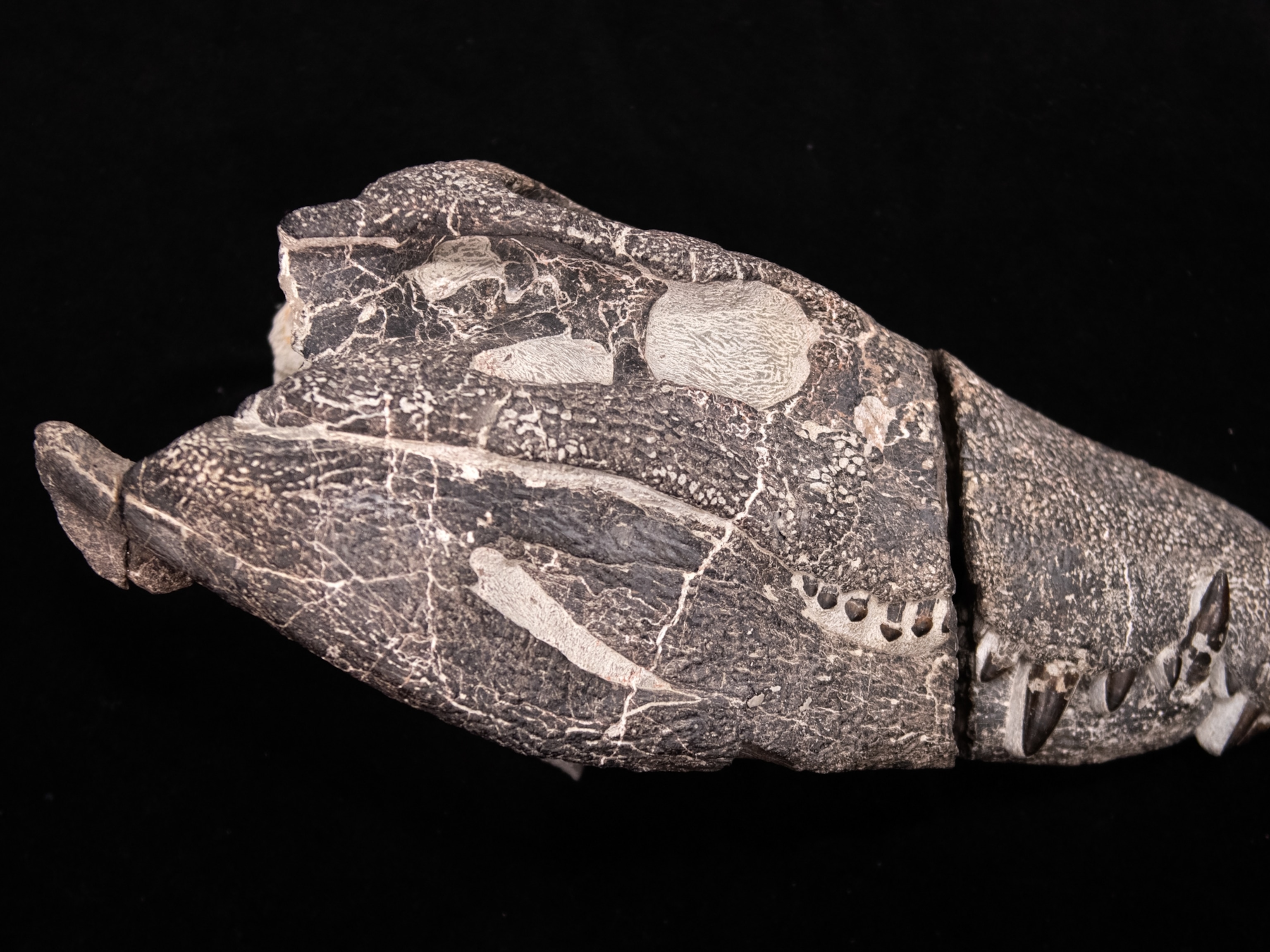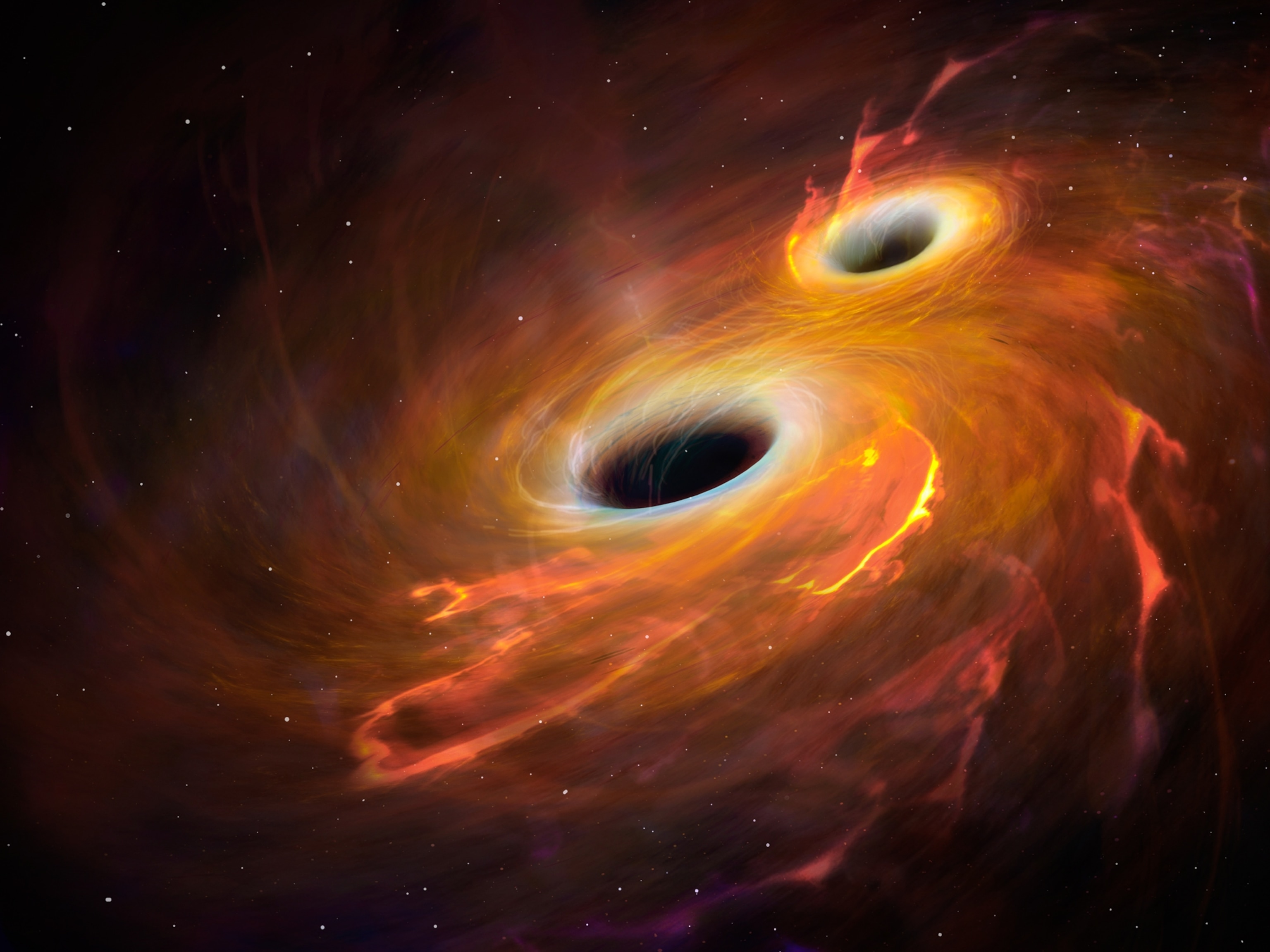Some 96 million years ago, the suburbs of Dallas, Texas, were part of a lush river delta that was home to turtles, dinosaurs, fish—and a bizarre creature that looked like a crocodile but may have eaten like an opossum.
The newfound animal, Scolomastax sahlsteini, is a crocodyliform, an extinct, distant cousin of today's crocodiles and alligators. It grew about three to six feet long, and its right lower jaw implies that it had fewer teeth than related crocodiles. Its teeth also seem to have come in several different shapes. (Find out about another crocodyliform that munched on small dinosaurs.)
These traits are consistent with living animals that crunch on hard foods or eat a varied diet, which suggests that Scolomastax may well have been omnivorous. By contrast, modern crocodiles are carnivores and often specialize in ambushing prey near the water's edge.
“It seemed to be filling a niche that we really don’t see modern crocs and alligators filling,” says lead study author Christopher Noto, a paleontologist at the University of Wisconsin-Parkside. “Living crocodiles and alligators are not 'living fossils.' They are simply just survivors and only represent a small fraction of the lifestyles that their ancient relatives filled.”
Urban wildlife?
The strange reptile, described last week in The Anatomical Record, is the latest ancient creature to emerge from Texas's Arlington Archosaur Site. At about 96 million years old, this site dates to the Cretaceous period, a time when a vast seaway stretched from western Canada to the Gulf of Mexico. The waterway split North America into two ancient continents: Laramidia to the west, and Appalachia to the east.
Many of North America's Cretaceous fossil sites, such as Utah's stunning horned-dinosaur localities, capture the goings-on in Laramidia. But the Arlington Archosaur Site records a river delta in Appalachia, which is a much rarer find. What's more, Scolomastax is a paralligatorid, a group best known from fossils in Asia. As the first paralligatorid ever found in Appalachia deposits, Scolomastax reinforces the notion that animals living in Asia and North America mixed and mingled in the early Cretaceous, before rising waters split North America in two.
“The cool thing about the Arlington Archosaur Site is that it's actually from both a time [and a place] that we don't find many fossils,” says study coauthor Stephanie Drumheller-Horton, a paleontologist at the University of Tennessee. “There's a lot about Appalachia that's still really mysterious, so everything we find at this site is filling in major gaps.”
The Arlington Archosaur Site was discovered in 2003 by a group including Derek Main, then a graduate student at the University of Texas-Arlington. Main oversaw study of the site until 2013, when he died unexpectedly. Noto took over the project that same year, and he has been leading its study ever since with partial funding from the National Geographic Society.
If you're picturing windswept badlands like the fossil dig site scenes from Jurassic Park, the Arlington Archosaur Site may throw you for a loop: It's located within Viridian, a large planned community in Arlington, Texas, a suburb of the Dallas-Fort Worth area.
“The funny thing about [the site] is if you stand up and you’re facing the wall where all the fossils are coming out, and you turn around, in the distance you can actually see the Dallas Cowboys football stadium,” Drumheller-Horton says.
Ancient bounty
Odd though it may sound, the proximity to a major urban area has helped paleontologists protect and study the site. Most of the excavators have been volunteers, including many from the Dallas Paleontological Society. Among them is local amateur paleontologist Art Sahlstein, one of the site's co-discoverers and the discoverer of Scolomastax. Researchers gave the reptile the species name sahlsteini to honor his contributions.
“[This] academic and public partnership has put academic paleontologists together with amateur fossil enthusiasts and really forged something that is pretty unique and different,” Noto says. “I do think there’s a model there for these types of relationships, where we want to enhance the public knowledge and appreciation for what paleontology is, and what we gain from studying the fossil record.”
Dallas's Perot Museum of Nature and Science has taken on the site's fossil collection, which has swelled to thousands of specimens. The bounty includes remains of various dinosaurs, plants, and fish; a huge crocodyliform called Deltasuchus; up to nine species of extinct turtles; and possibly some remains of a small snake. Drumheller-Horton adds that the site also preserved hundreds of coprolites, or fossilized feces.
For now, excavations at the site are on hold as researchers sift through the huge haul they've already uncovered. But Soto says that even more surprises—and opportunities for connecting people with the distant past—may lie ahead.
“One of the things we constantly would hear from people who'd visit the site or volunteer there was, I had no idea that anything like this existed under my feet—that anything like this was around us,” Noto says. “It’s been very gratifying.”





























